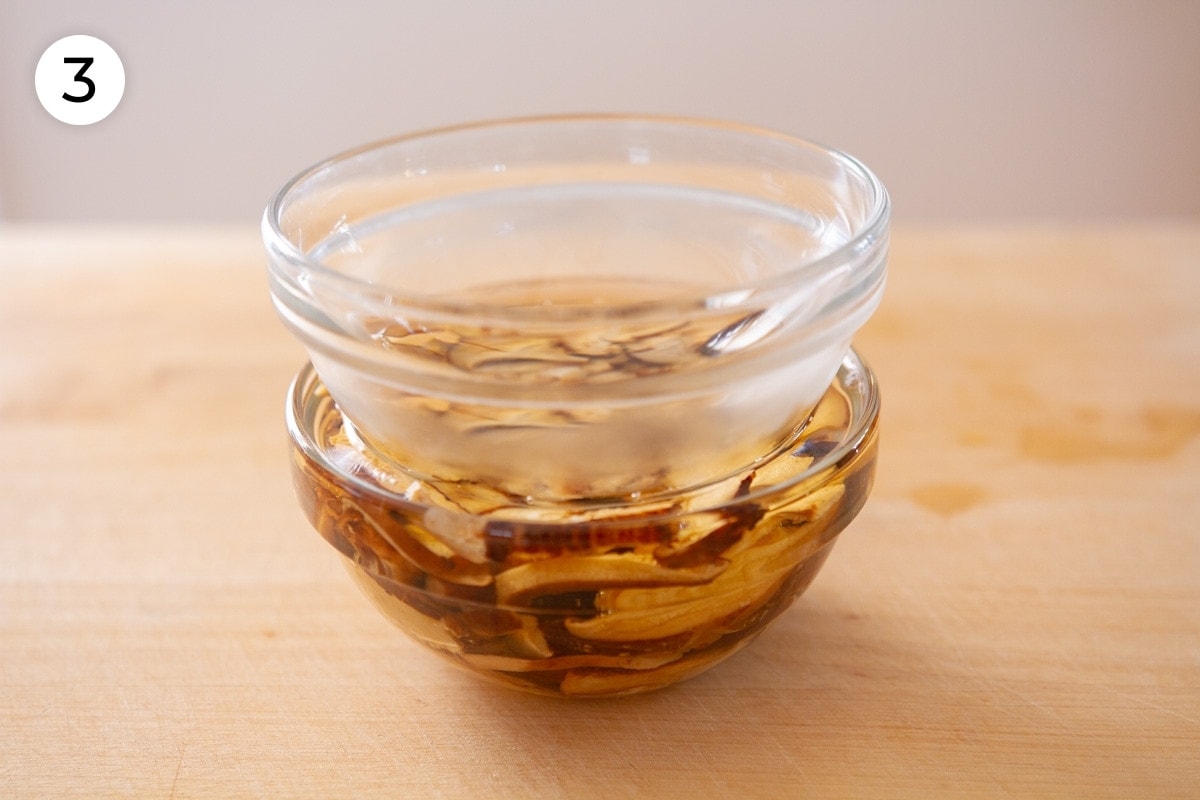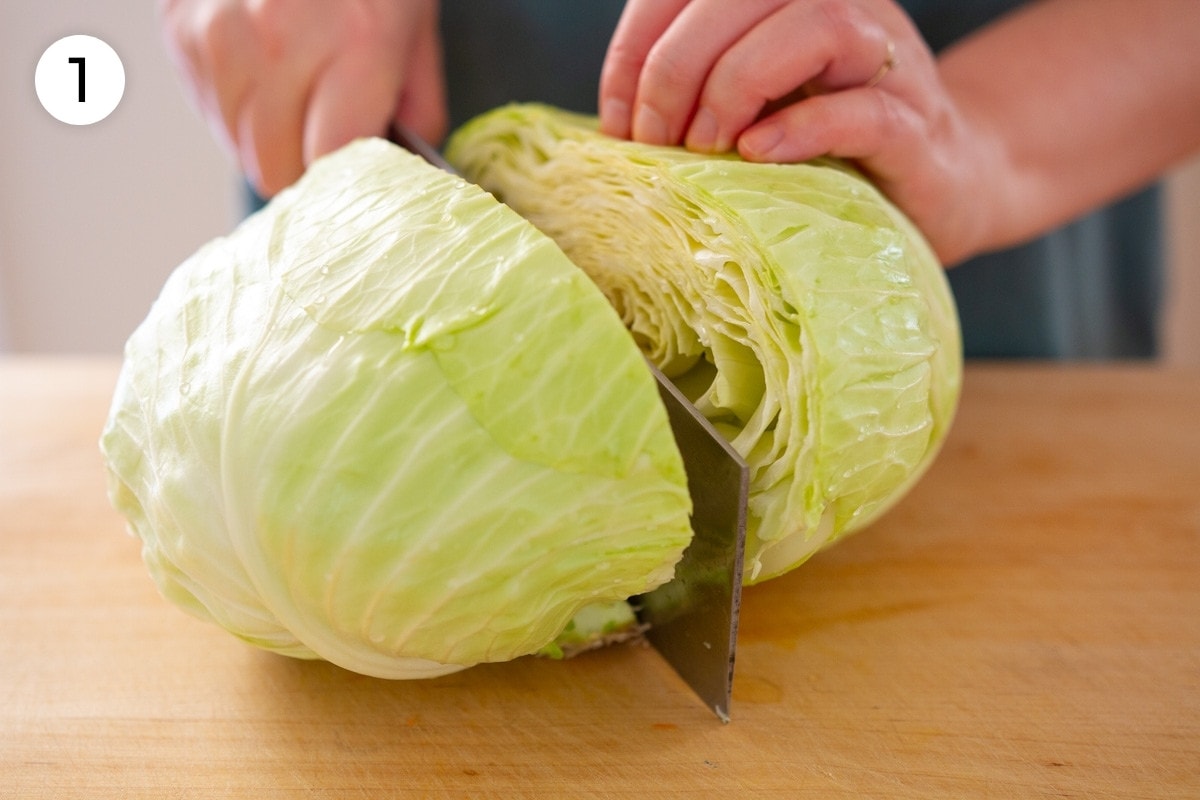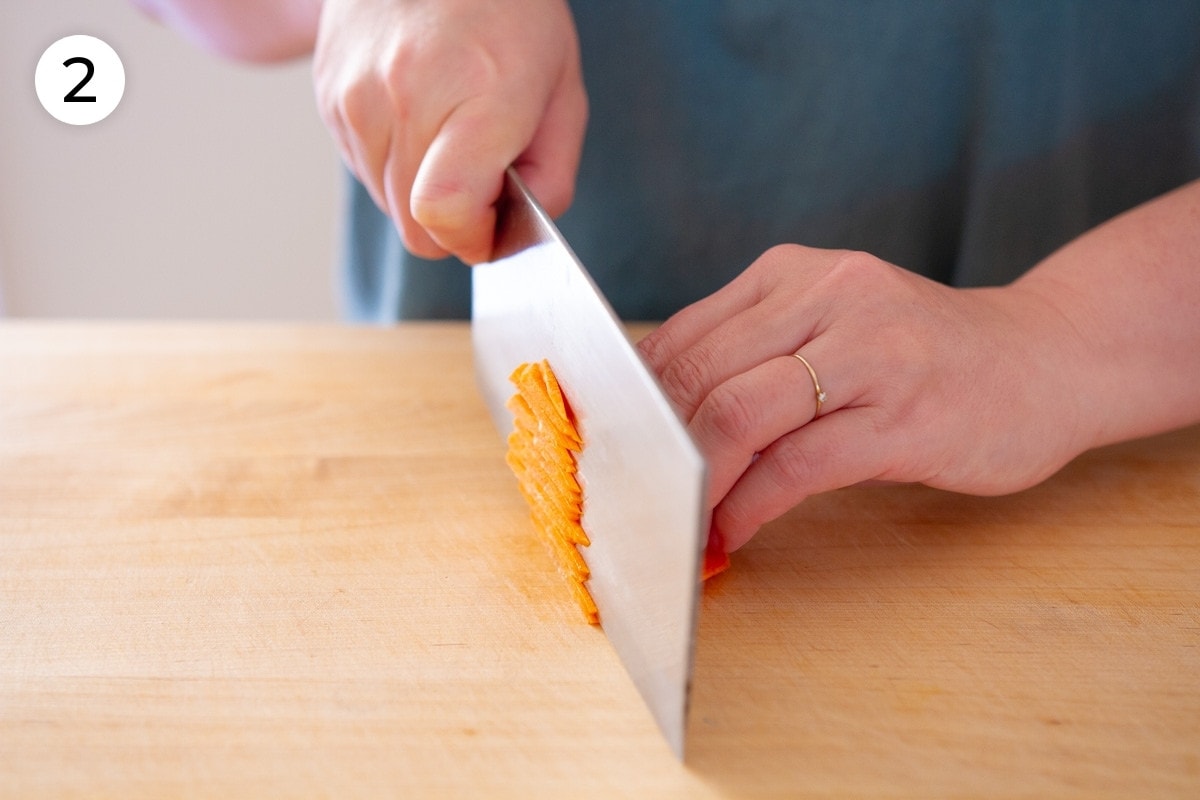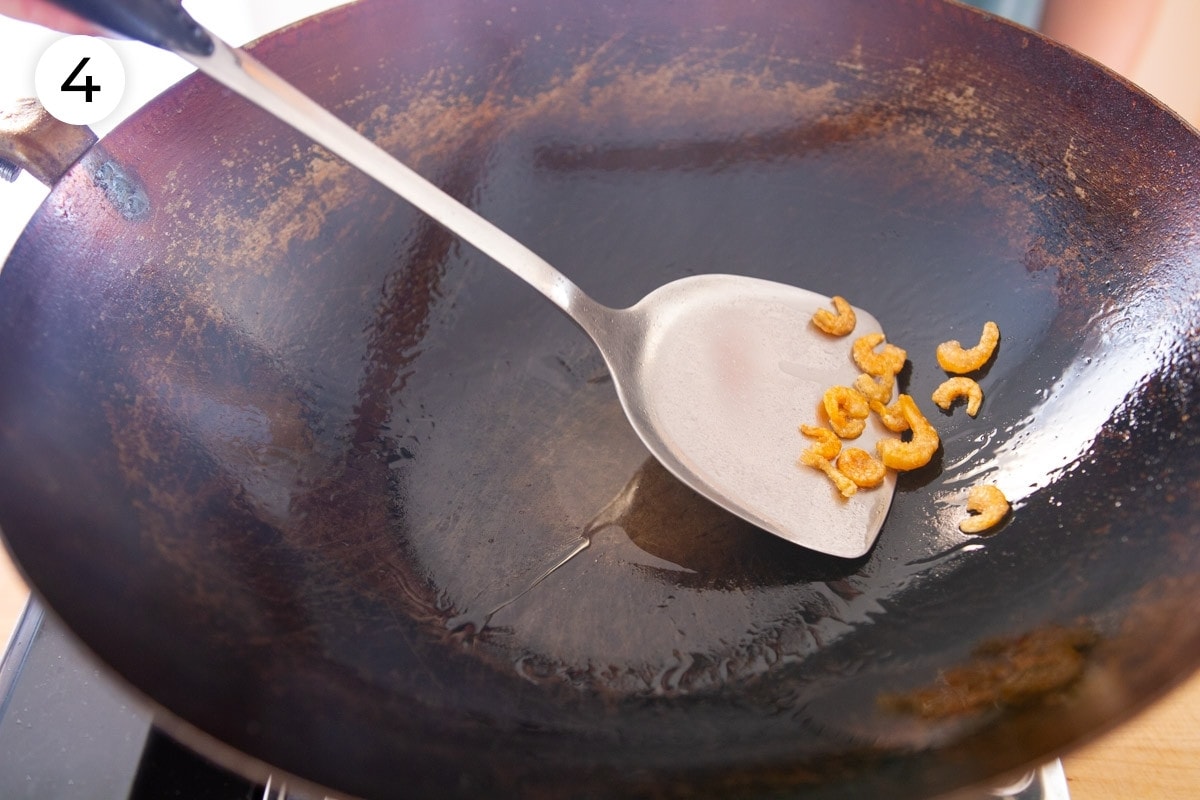Learn how to make the most delicious Taiwanese-style vegetable mei fun noodles (台灣炒米粉)! A classic stir-fried rice noodle dish with layers of subtle flavors, using vegetables that are easily customizable. I'll guide you through each step so your rice noodles are perfectly moist, but not drowning in sauce. Enjoy this classic mouthwatering one-pan recipe in just 30 minutes!

jump to:
✨ why you'll love this recipe
There are many different versions of this popular dish, but this mei fun recipe has the distinct flavor profile of the Taiwanese style. Every family has their own favorite mei fun noodles which I think is one of the best parts of this recipe – its flexibility!
recipe highlights:
- It's super customizable with different proteins and vegetables
- Enjoy it on its own since it's a complete meal, or serve it with some stir-fry spinach, morning glory, or a cozy Taiwanese bitter melon soup.
- Leftovers are delicious
- You'll only use one pan, so cleanup is minimal
- The rich savory sauce infuses the thin rice noodles with flavor
- It includes tons of veggies and you can add your own protein
You can customize it to your family's preferences and easily control the flavors at home. Taiwanese-style noodles aren’t super heavily spiced.
However, they have multiple layers of rich umami flavors to satisfy your palate!
I include dried shiitake mushrooms and small dried shrimp in this version, along with a variety of vegetables. Since this recipe is so flexible, you can always use the vegetables you have on hand.
Keep in mind that while the list of ingredients might make this recipe seem daunting to make, it's actually quicker than it seems. As with all stir-fried dishes, the ingredient prep and measuring out all the sauces is key. Once you have that all ready, it only takes 10 minutes to cook.
Once you’ve enjoyed your delicious vegetable mei fun, have some mochi cupcakes for dessert! Or serve it with some homemade taro bubble milk.
💭 what is mei fun
Vegetable mei fun noodles, chhá bí hún in Taiwanese or 炒米粉 (chǎo mǐfěn) in Chinese, is a dish that consists of Taiwanese rice noodles, a protein, and vegetables. It's also sometimes spelled as mi fen, mifen, or mai fun.
Sometimes sold as a house special mei fun at Chinese American and Cantonese restaurants, these Taiwanese noodles are distinct and revered! They’re thin but once soaked they are pliable, and thankfully they can hold up to stir-frying.
Unlike similar noodle dishes, this recipe delicately balances the moisture content to ensure the noodles are moist but not drowning in the savory sauce.
Fun Fact: Chow mei fun (炒米粉) is the dish’s name in Mandarin, Chinese. “Chow” means to stir-fry and is sometimes spelled as “chao.” Its Chinese character 炒 actually has the root word fire in it.
The mei fun dish is traditionally made in two different ways. In meat-eating households, it’s often made with thin strips of pork loin, while other times, it’s made like today’s vegetable version with five-spice tofu or bean curd. Both are delicious protein options that are completely up to you!
This mei fun recipe recreates the classic Taiwanese flavors we know and love, and highlights the textures and flavors of each ingredient. I hope you enjoy each delicious bite!
📋 key ingredients
Like I said, the list may seem daunting - but don't be put off! All you have to do is chop your veggies and prep some of the ingredients, then throw it all in a wok.

- dried shiitake mushroom slices - already sliced versions will work best to cut down on prep time. You can find them at your local Asian grocery store and some general grocery stores. They're available at 99 Ranch Markets or online at Weee! (affiliate link) or possibly through Instacart.
- small dried shrimp (optional) - although optional, including it will add a subtle umami layer to this dish that will take it to the next level. They can also be found at your local Asian grocery store or online in the refrigerated section. They are usually in plastic packaging that is around the size of a journal notebook.
- taiwanese rice noodles - also called mifen, mei fun, maifun, and sometimes rice vermicelli noodles. There are many different types of rice noodles that might be labeled as "vermicelli," so make sure you're getting thin rice noodles as shown in the photo above. Online, Taiwanese rice noodles are also sometimes labeled as "Taiwan Hsin Chu rice noodles" (新竹米粉) after the city in Taiwan where they're made. They can also be found at local Taiwanese, Chinese, Japanese, and Korean grocery stores (such as 99 Ranch, Mitsuwa, Marukai, Tokyo Central, H Mart, etc.). Check the ingredients to make sure you're not picking up the "mung bean" noodles by mistake.
- five spice tofu - also called bean curd. These can be found at your local Asian grocery store or online, in the refrigerated section where other tofu products are located. Usually, they are vacuum-packed in plastic packaging.
- carrot
- garlic
- salt - I use Diamond Crystal kosher salt (affiliate link), which has about half of the sodium compared to other salts. If you're using table salt or sea salt instead, make sure to cut back on the amount by half.
- taiwanese cabbage - you can substitute this for napa or green cabbage.
- mung bean sprouts (optional)
- scallions
- low sodium soy sauce - I like the one by Yamasa (affiliate link) for a lower sodium option that tastes good. You can find it at a local Japanese grocery store for a lower price. You can substitute with half the amount of Kimlan soy sauce (light), which is a brand commonly used in Taiwanese dishes. The "light" version is lighter in color, not sodium.
- ground white pepper - an essential ingredient to all Taiwanese cooking. If you've made other savory Taiwanese dishes before and felt like something was missing, it might have been a sprinkle of ground white pepper.
- sugar - used to balance out the flavors at the end.
- cilantro - fresh cilantro really brings everything together at the end.
See the printable recipe card for quantities.
📖 substitutions
- vegan and vegetarian - leave out the dried shrimp to make this dish vegetarian and vegan.
- gluten-free - use a soy sauce that's brewed without wheat like the Taiwanese ones that Yun Hai carries or opt for tamari.
- meat option - Instead of bean curd or tofu, you can use shredded or thin strips of pork loin.
- tofu - five spice tofu can be substituted with drained firm tofu. Firm tofu won't be as sturdy as bean curd, so you'll need to stir more gently when cooking this dish.
- Taiwanese cabbage - you can use green cabbage (or buy already shredded cabbage to save on prep time!) or thinly sliced napa cabbage.
📖 variations
- spicy - serve it with a side of Taiwanese chili bean paste (affiliate link), chili garlic sauce, or sriracha.
- Buddhist friendly - for Buddhist family members that follow a vegetarian and allium-free diet, use 1 teaspoon of grated fresh ginger in place of garlic and omit the scallion and dried shrimp.
- Singapore rice noodles - add 1-2 tablespoons of curry powder (based on personal taste preference) and 1 cup of thinly sliced onions. Contrary to the name of a popular dish from Chinese American restaurants, this variation in the dish actually isn't Singaporean at all.
This base recipe also tastes amazing with shrimp, especially for seafood lovers.
🔪 instructions
I’m going to go through each step in detail below, including step-by-step photos of how to prep each ingredient before cooking. In a hurry? You can jump straight to the printable recipe.
Begin by rehydrating your mushrooms and shrimp.

Place the dried shiitake mushrooms in a small bowl.

Soak your dried mushrooms in 2 cups of just boiled water.

Place a smaller bowl on top to keep the mushrooms fully submerged. Soak for at least 20 minutes.

In the meantime, cover the small dried shrimp (if using) in just boiled water and soak for 10 minutes, then drain and set aside.
hint: Small dried shrimps are used in a lot of Taiwanese and Asian recipes to add an extra layer of flavor to a dish. You can choose to use them just to infuse flavor into your cooking oil or keep them in the noodle dish. Some people don't like the dried shrimp texture (even after they're rehydrated), so I tend to take them out.
Next, prepare the tofu and scallions.

Slice your five-spice tofu in half.

Then, turn them so the cut side is flat against the board and cut the halves lengthwise from top to bottom.

Cut the sliced bean curd into even thinner slices.

Finally, slice the scallions at an angle.
Now, slice the Taiwanese cabbage.

Slice the cabbage in half.

Then, turn the half so the flat side is face down on the cutting board and slice it again.

Cut out the stem portion of the cabbage.

Then slice the cabbage into thin strips.
Also, slice the carrot.

Cut a peeled carrot at a bias.

Julienne your carrot, which means slice it into match sticks.

They should be thin and relatively uniform, but they don't need to be perfect.

You can also use a julienne peeler instead.
pro tip: I love using this Asian julienne peeler (affiliate link) to make vegetable prep super easy. It’s great for the julienned carrots in this dish but can also work for kohlrabi, zucchini, and cucumber.
The last step before cooking is to prep the rice vermicelli noodles.

Soak the Taiwanese rice noodles in just boiled water.

Make sure the noodles are fully submerged in water, and allow them to soak until they're fully soft, which will take about 5-10 minutes.

Use a strainer to remove the noodles from the water.

The noodles should be soft and pliable after soaking.
It's now time to cook! Begin by heating a 12-inch seasoned wok or cast iron pan over medium-high heat until the pan is hot (about 15 seconds for a wok or 2 minutes for a cast iron pan).

Add 2 tablespoons canola oil.

If using dried shrimp, add them now.

Cook for about 30 seconds.

Then remove the shrimp from the pan.

Add the tofu slices to the wok.

Season them with 1⁄4 teaspoon salt.

You can add white pepper, and then stir-fry until lightly brown, about 2 minutes.

Add the carrots.

Add the mushrooms.

Add the garlic and 1⁄4 teaspoon salt.

Stir fry these ingredients by scooping and flipping the ingredients with a spatula for about one minute.

Add 1 tablespoon of canola oil.

Then add the cabbage.

Stir them into the rest of the vegetables.

Add the sliced scallions to your wok.

Add the bean sprouts and then stir fry for another 30 seconds.

Add 1 cup of the mushroom soaking liquid to rehydrate the dried shiitake mushrooms.

Add three tablespoons of soy suace.

Add the rice noodles.

Stir quickly to combine using tongs or two spatulas.

The noodles should be combined with all of the other ingredients as pictured above.

Check the bottom of the wok or pan by pushing the noodles aside. If there's still a pool of sauce, continue cooking for 1-2 minutes while stirring.

You'll know when the mei fun noodles are done cooking when the bottom of the pan is fairly dry after the noodles have absorbed most of the sauce.

Add ground white pepper, sugar, and optional cilantro, and continue to cook while stirring until the liquid is mostly absorbed (1 minute).

Serve family style. Enjoy!
🍲 equipment
Note: Some of the links below are affiliate links, which means we do make a small profit from your purchases (your price is not affected by this commission). We are a participant in the Amazon Services LLC Associates Program, an affiliate advertising program designed to provide a means for us to earn fees by linking to Amazon.com and affiliated sites. If you click on an affiliate link, you consent to a cookie being placed on your browser for purposes of tracking commissions.
- Large strainer
- 14 inch wok or cast iron pan
- Wok spatula
- Cooking chopsticks
- Cutting board
- Chef’s knife
- I love using this Asian julienne peeler (affiliate link) to make vegetable prep super easy. It’s great for the julienned carrots in this dish but can also work for kohlrabi, zucchini, and cucumber.
- Vegetable peeler
❄️ storage
You can refrigerate any leftovers in covered containers. This dish also works well as a couple of days of meal prep. Allow individual portions to fully cool before placing them in the fridge.
Reheat your mei fun in the microwave, covered, for 30 seconds to 1 minute, or in a preheated steamer for about 2 minutes until fully heated but not soggy yet.
I don’t recommend freezing this dish since the texture of the noodles and vegetables will change.
💭 top expert tip
Make sure to reserve the soaking water for the dried mushrooms to use if the noodles are too dry in the cooking process. You can use stock if you don't have enough reserved water.
💭 faq
Thin rice noodles! There are many different types of rice noodles that might be labeled as "vermicelli," so make sure you're getting thin rice noodles as shown in the photo under the Key Ingredients section. When shopping, be sure to check the ingredients to make sure you're not picking up "mung bean" noodles or "bean thread" noodles by mistake.
Yes, rice vermicelli noodles are naturally gluten-free since they're made of rice flour. To make the entire mei fun dish gluten-free, just make sure you use a gluten-free soy sauce.
I recommend tasting the noodles to get a better feel for the texture instead of relying on how they look. The rice noodles in this dish aren't meant to look super wet or soupy. If they do taste too dry, add a splash (about 2 tablespoons) of extra mushroom soaking liquid or chicken/vegetable stock to the pan, then gently stir and continue cooking the noodles for one minute.
Taste the noodles to see if the texture is to your liking, remembering that it will continue to cook a little even after you turn off the heat. You can add another splash if the noodles are still too dry.
The difference between mei fun and lo mein is in the types of noodles. Mei fun is lighter because of the thin rice noodles, while lo mein is a bit heavier due to the dish's thicker egg noodles.

🍲 east asian soups to serve with stir-fried noodles
Looking for other recipes that will go well with mei fun? Soups like these are traditionally served with every meal:
👨🍳 COOKING WITH KIDS
What can kid chefs help with?
- soaking the noodles
- measuring out the sauces
- taste testing! 😜
Let me know if you have any questions in the comments below.
Happy cooking! ~ Cin
Want to get recipe updates, pro cooking tips, and nutrition info on East Asian ingredients straight to your inbox? Sign up here for a free PDF with cozy soup recipes.
Please give this recipe a star rating ⭐️⭐️⭐️⭐️⭐️ if you make it. I would love to hear from you! If you have any questions at all, let me know in the comments below.
vegetable mei fun noodles (mifen) 台灣炒米粉
ingredients
- 1 ounce dried shiitake mushroom slices, about 1 cup (can substitute with 5 whole dried shiitake mushrooms, rinsed). *Already sliced versions will work best to cut down on prep time.
- 1 tablespoon dried small shrimp, soaked in hot water for 10 minutes and drained (optional)
- 2 cups just boiled water
- 7 ounces rice vermicelli noodles
- 3 tablespoons canola oil, or other neutral flavor oil, divided
- 8 ounces five spice tofu, also called marinated bean curd or dry tofu, cut into ¼-inch thick rectangular slices (can substitute: firm-tofu or pork loin)
- 1 small carrot, about 2 ounces, peeled and cut into thin matchsticks
- 2 cloves garlic, peeled and minced
- ½ teaspoon Diamond Crystal kosher salt, divided (use half the amount if using sea salt or table salt)
- 8 ounces Taiwanese cabbage, thinly sliced or shredded (can substitute with napa cabbage)
- 6 ounces mung bean sprouts, about 2 cups (optional)
- 1 whole scallion, ends trimmed and cut into 2-inch pieces
- 1-2 cups liquid from soaking shiitake mushrooms, or substitute with low sodium chicken broth
- 3 tablespoons low-sodium soy sauce (Kimlan preferred)
- ⅛ teaspoon ground white pepper
- ½ teaspoon, sugar
- 2 tablespoons chopped cilantro, optional
*The Instacart button above is an affiliate link, which means we do make a small profit from your purchases (your price is not affected by this commission).
instructions
prep
- Soak the dried shiitake mushrooms in 2 cups of just boiled water. Place a smaller bowl on top to keep the mushrooms fully submerged. Soak for at least 20 minutes. In the meantime, prepare the other ingredients.1 ounce dried shiitake mushroom slices, 2 cups just boiled water
- Cover the small dried shrimp (if using) in just boiled water and soak for 10 minutes, then drain and set aside.1 tablespoon dried small shrimp
- Once the mushrooms are fully reconstituted, squeeze out the liquid into the same bowl, reserving the liquid to use later. Then, de-stem and thinly slice the mushrooms and set aside.
- Pre-soak the rice vermicelli noodles according to the package instructions (usually in warm water until they just turn soft, about 5-10 minutes). Drain and set aside.7 ounces rice vermicelli noodles
cook
- Heat a 12-inch seasoned wok or cast iron pan over medium-high heat until the pan is hot (about 15 seconds for a wok or 2 minutes for a cast iron pan). Add 2 tablespoons canola oil and the tofu slices, season with 1⁄4 teaspoon salt. Stir-fry until lightly brown, about 2 minutes. *If using the dried shrimp, add them before the tofu and cook for 30 seconds, then remove the shrimp from the pan.3 tablespoons canola oil, 8 ounces five spice tofu
- Add the carrots, mushrooms, garlic, and 1⁄4 teaspoon salt. Stir-fry by scooping and flipping the ingredients with your spatula for 1 minute. Add 1 tablespoon canola oil, then the cabbage, bean sprouts, and scallions. Stir-fry for another 30 seconds.1 ounce dried shiitake mushroom slices, 1 small carrot, 2 cloves garlic, ½ teaspoon Diamond Crystal kosher salt, 8 ounces Taiwanese cabbage, 6 ounces mung bean sprouts, 1 whole scallion
- Add 1 cup of the mushroom soaking liquid and 3 tablespoons soy sauce, followed by the softened vermicelli noodles. Stir quickly to combine using tongs or 2 spatulas (add more soaking liquid if the noodles look too dry). Add ground white pepper, sugar, and optional cilantro, and continue to cook while stirring until the liquid is mostly absorbed (1 minute).1-2 cups liquid from soaking shiitake mushrooms, 3 tablespoons low-sodium soy sauce (Kimlan preferred), ⅛ teaspoon ground white pepper, ½ teaspoon, 2 tablespoons chopped cilantro
- Serve family-style.
equipment and highlighted ingredients
notes
- vegan and vegetarian - leave out the dried shrimp to make this dish vegetarian and vegan
- gluten-free - use a soy sauce that's brewed without wheat like the ones at Yun Hai or opt for tamari.
- meat option - Instead of bean curd or tofu, you can use shredded or thin strips of pork loin.
- tofu - five spice tofu can be substituted with drained firm tofu. Firm tofu won't be as sturdy as bean curd, so you'll need to stir more gently when cooking this dish.
- Taiwanese cabbage - you can use green cabbage (or buy already shredded cabbage to save on prep time!) or thinly sliced napa cabbage.
🌡️ food safety
- Cook to a minimum temperature of 165 °F (74 °C)
- Don't leave the tofu or cooked noodles sitting out at room temperature for extended periods
- Never leave cooking food unattended
- Use oils with a higher smoking point (such as canola oil, avocado oil, or peanut oil) to avoid harmful compounds
- Always have good ventilation when using a gas stove




















share your thoughts below. let's chat at the kitchen table: